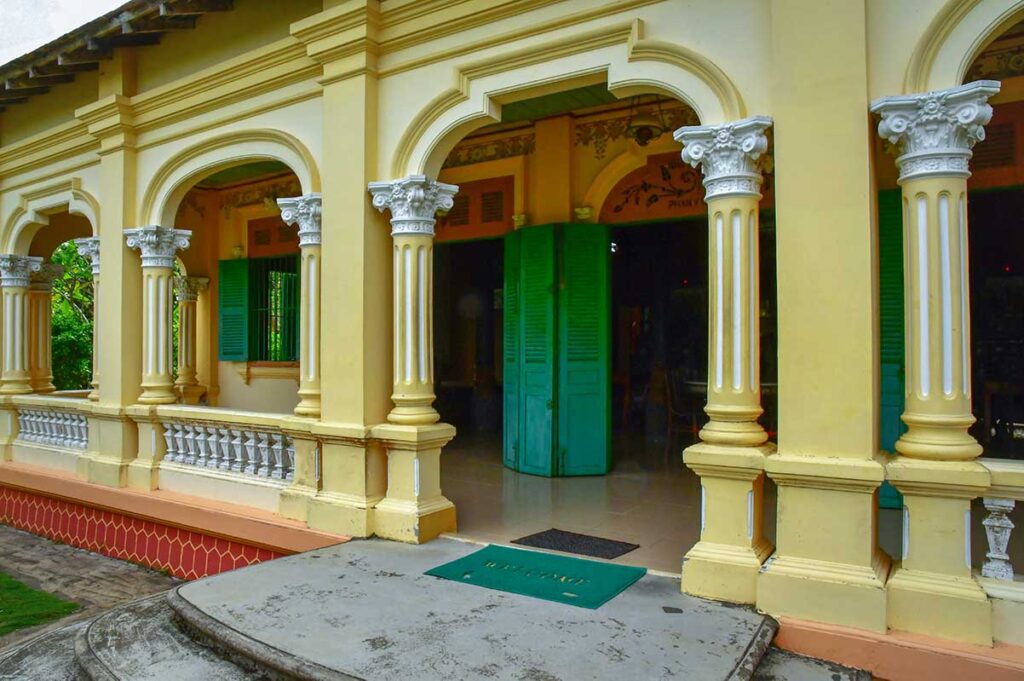What is Ba Duc Ancient House?
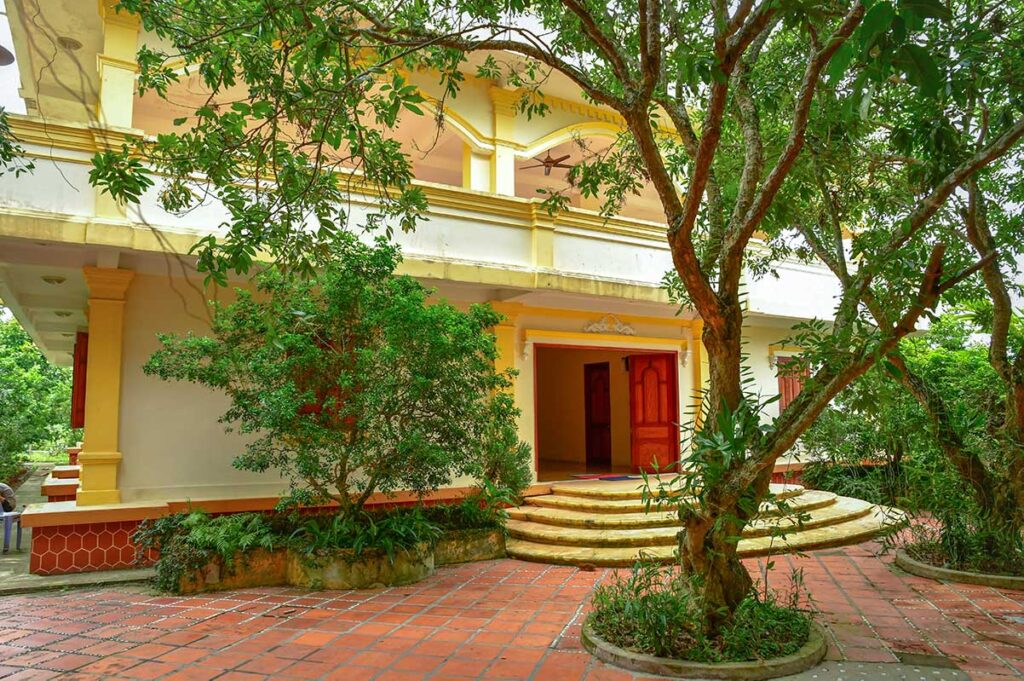
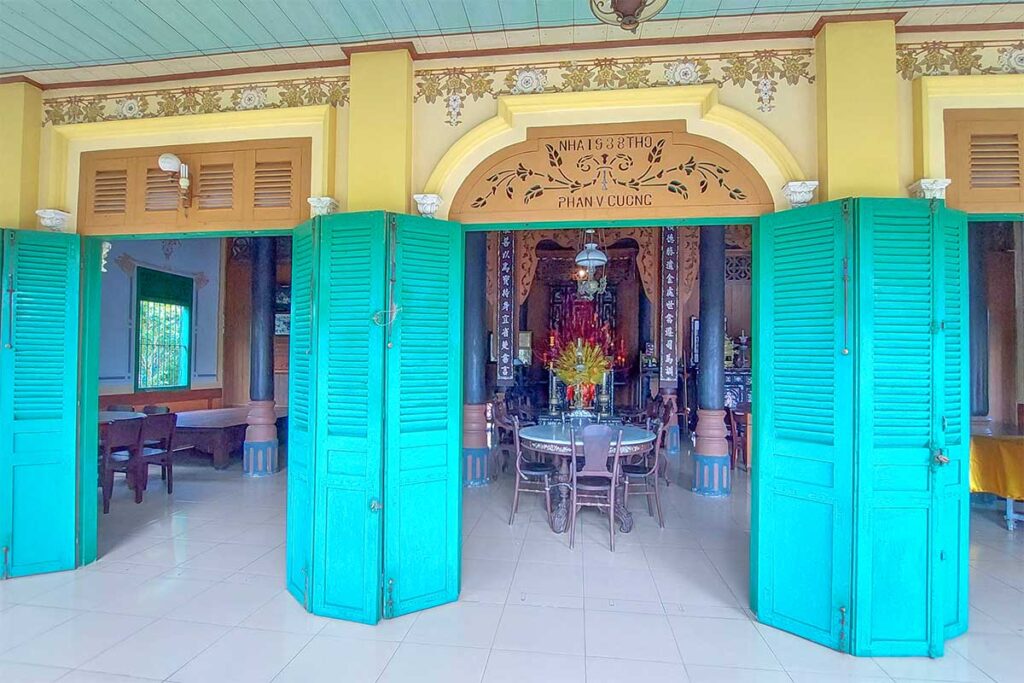
Ba Duc Ancient House is a 19th-century family residence in Cai Be that blends French colonial details with traditional Southern Vietnamese wooden architecture. The house sits within a spacious fruit garden and has been passed down through several generations of the same family, who still look after it today. For visitors, it works both as a small heritage site you can tour and as a homestay and restaurant, though the main draw is its history and atmosphere rather than extensive displays.
Highlights of visiting Ba Duc Ancient House
1. Architecture and Interior
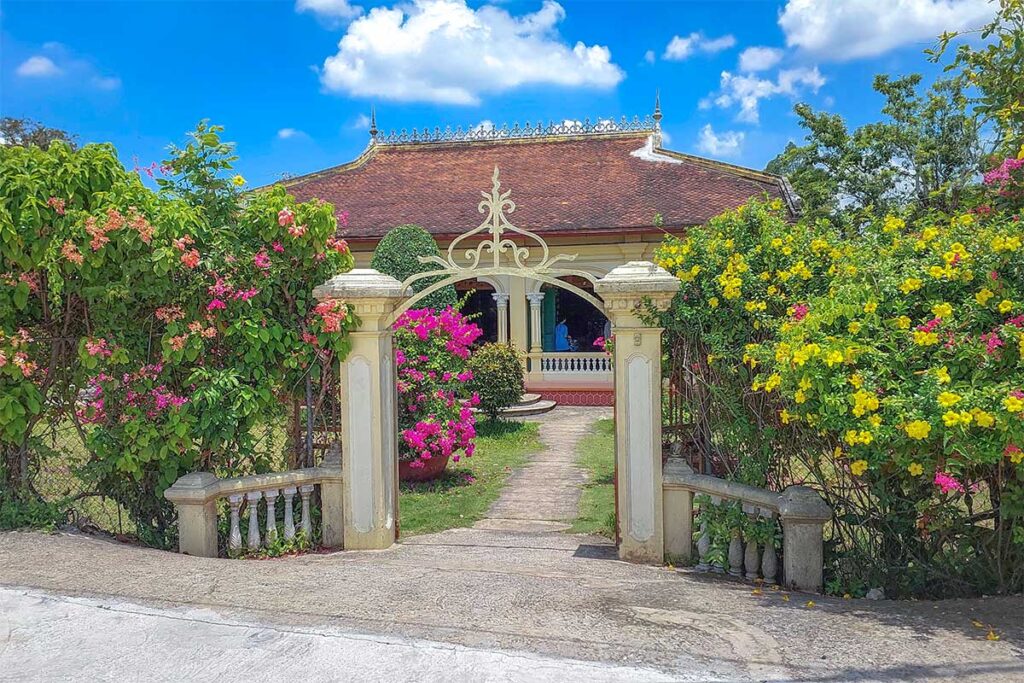
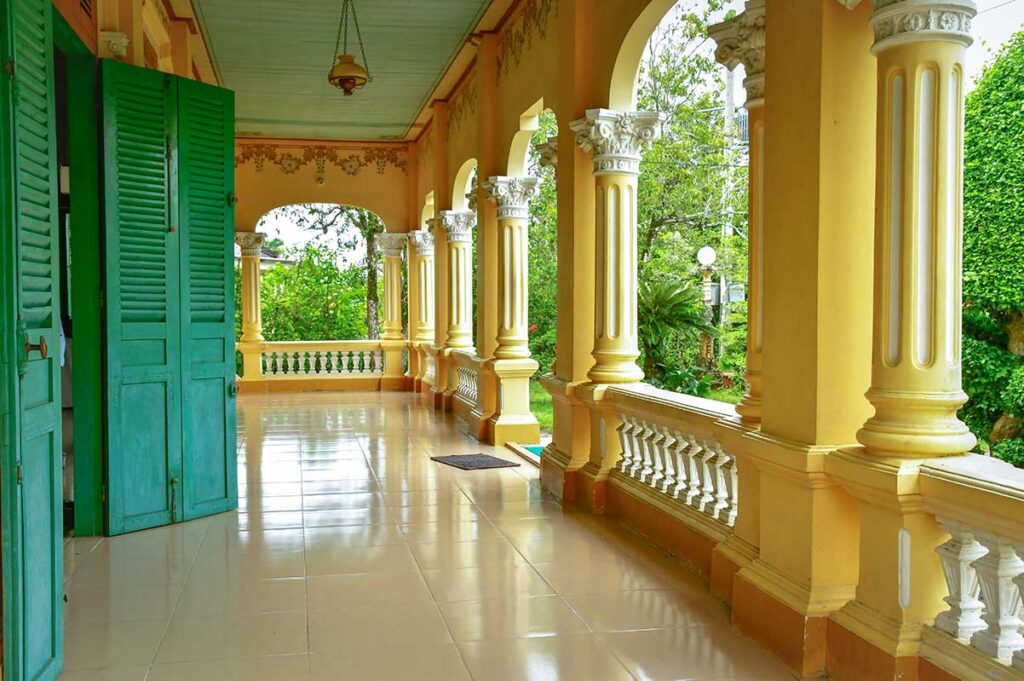
The house combines French colonial elements with the wooden folk architecture of Southern Vietnam. Its structure includes a skylight courtyard that brightens the interior and allows airflow, and the carved wooden columns are inscribed with Confucian sayings passed down to guide younger generations.
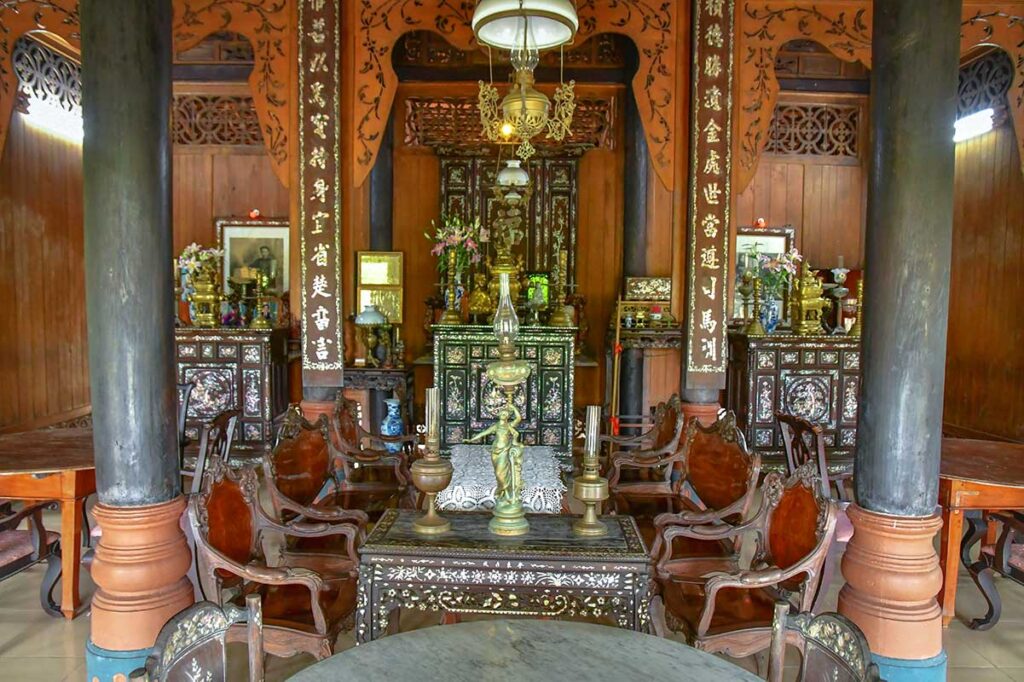
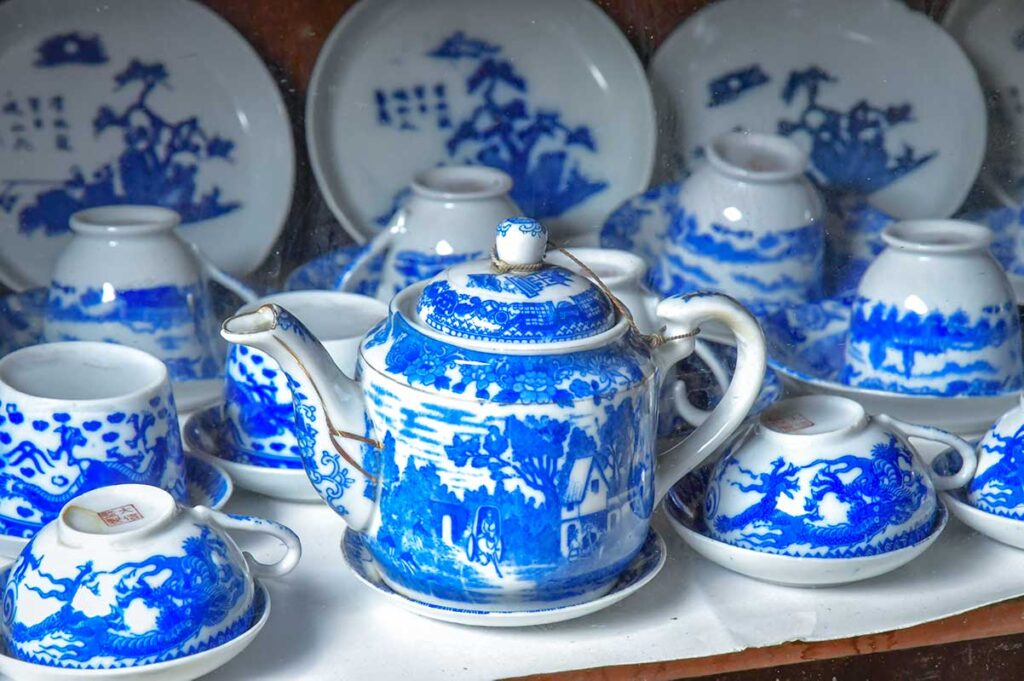
Inside, you can see antique furniture, Nguyen dynasty ceramics, and decorative items such as French lamps—though the collection is small compared to larger museums, it still gives a sense of the family’s wealth and lifestyle.
2. Gardens and Orchards
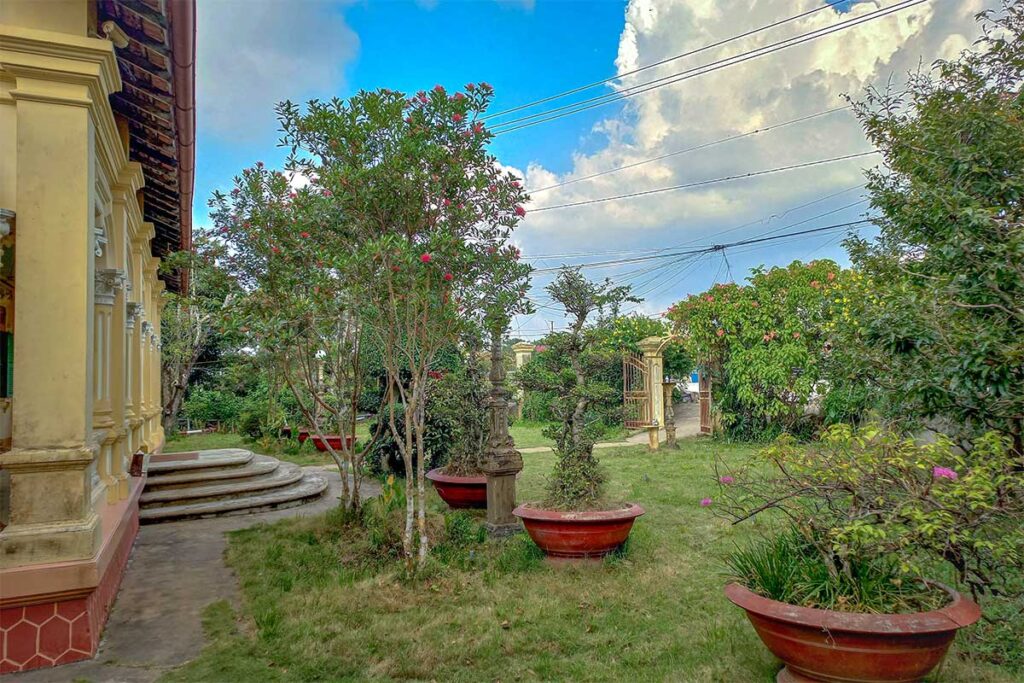
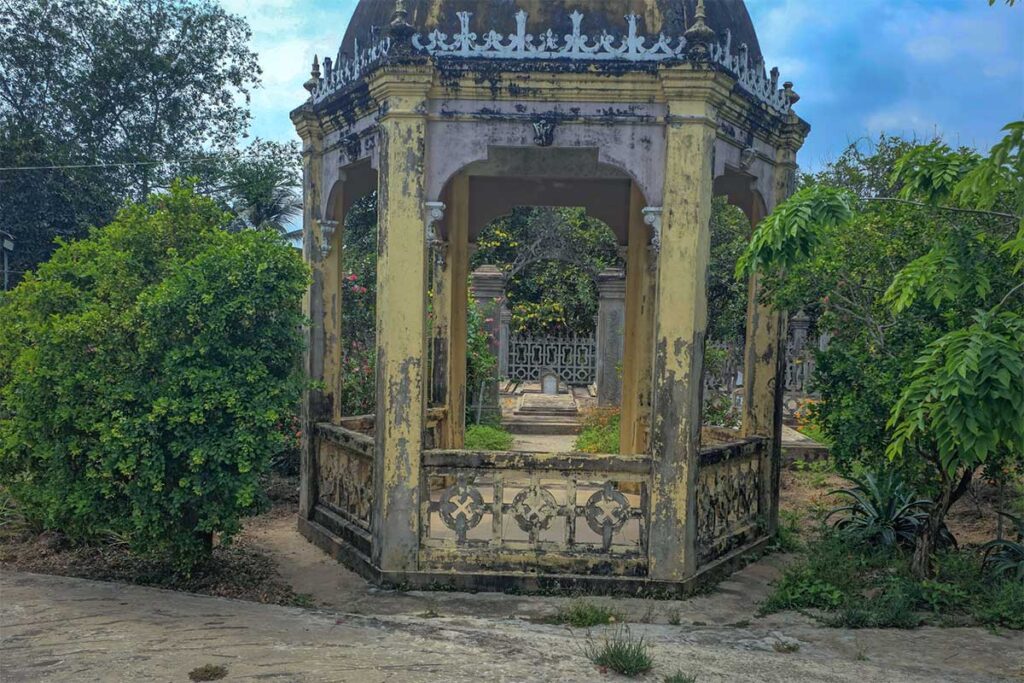
Ba Duc sits within a two-hectare garden planted with pomelo, longan, mango, and orange trees. Walking through the shaded paths and herb gardens is one of the most enjoyable parts of a visit, offering a quiet break from the heat and noise outside.
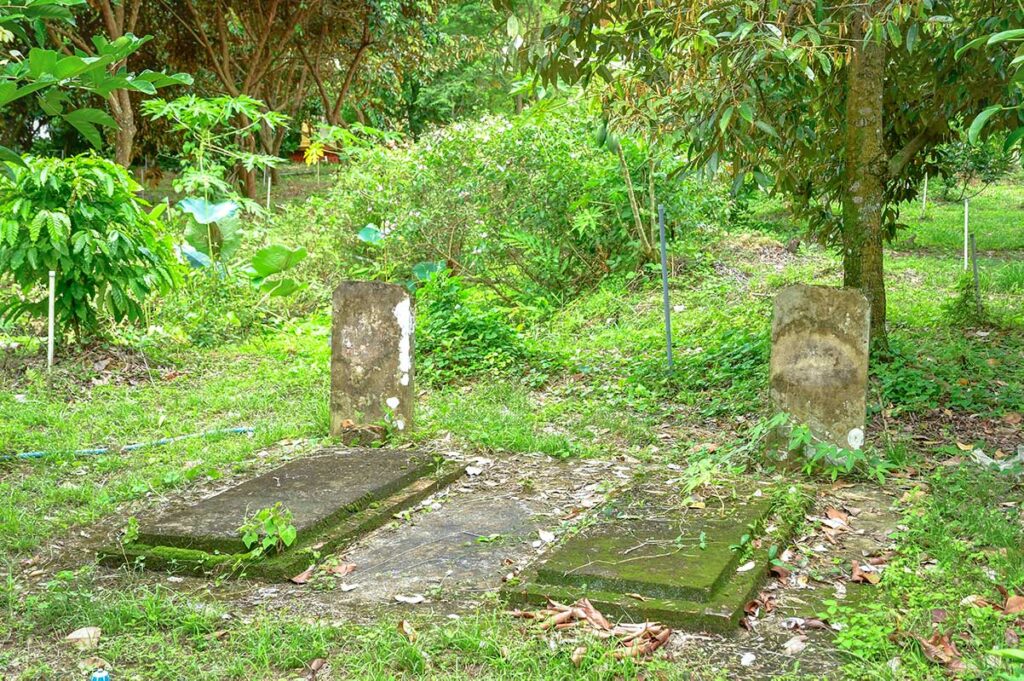
There is also the family cemetery nearby, which adds to the sense of continuity between the house and its history.
3. Arriving by Boat
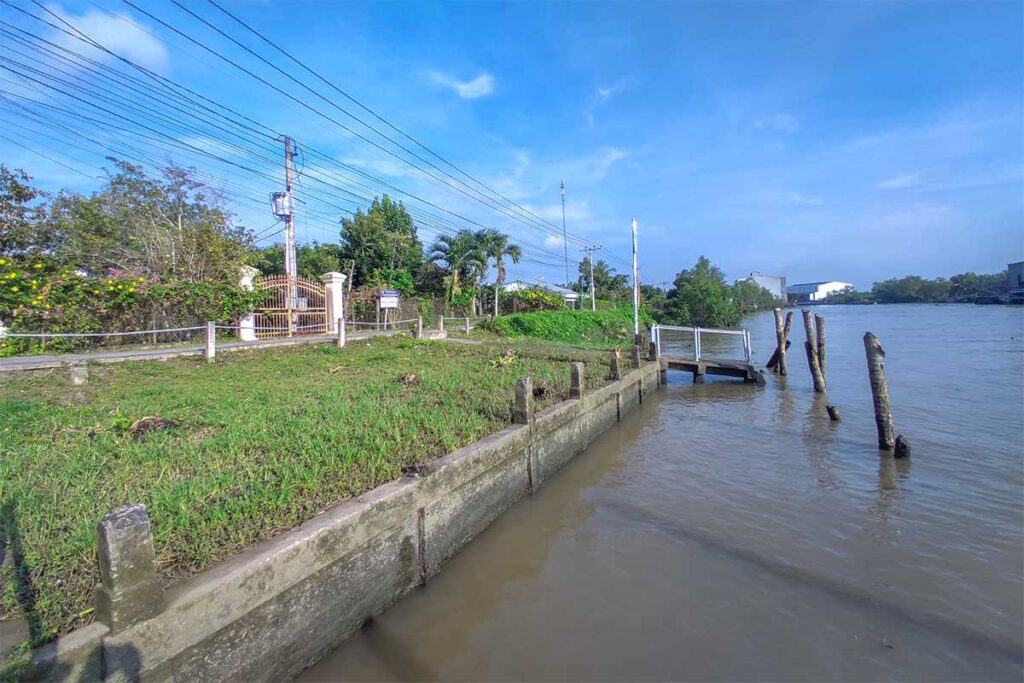
One of the most atmospheric ways to reach the house is by boat along the Mekong tributaries. This was historically the main access point and remains the most memorable way to approach the property, passing by orchards and small riverside communities before stepping straight into the garden from the riverbank.
4. Cultural and Culinary Experience
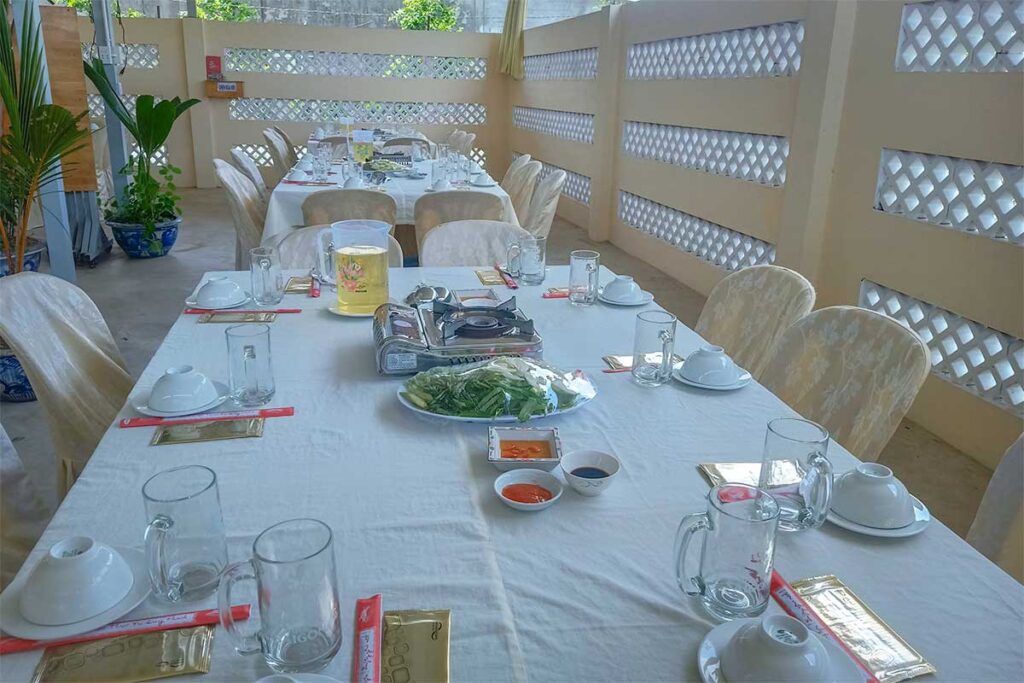
Visits often include conversations with family members, who share stories about the house’s past and life in the Mekong Delta. Meals can also be arranged, featuring local dishes such as sour soup, braised fish, and shrimp cakes, which have been recognized as an OCOP specialty. Some guests are invited to try simple cooking demonstrations, like rolling spring rolls, which make the experience feel more interactive.
Staying in Ba Duc Ancient House
Accommodation setup
Guests do not actually sleep inside the ancient house itself. Instead, the rooms are in a newer building within the same garden. The setup is simple: clean beds, private bathrooms, and either fans or air-conditioning. The style is plain and functional, without the charm of the historic house.
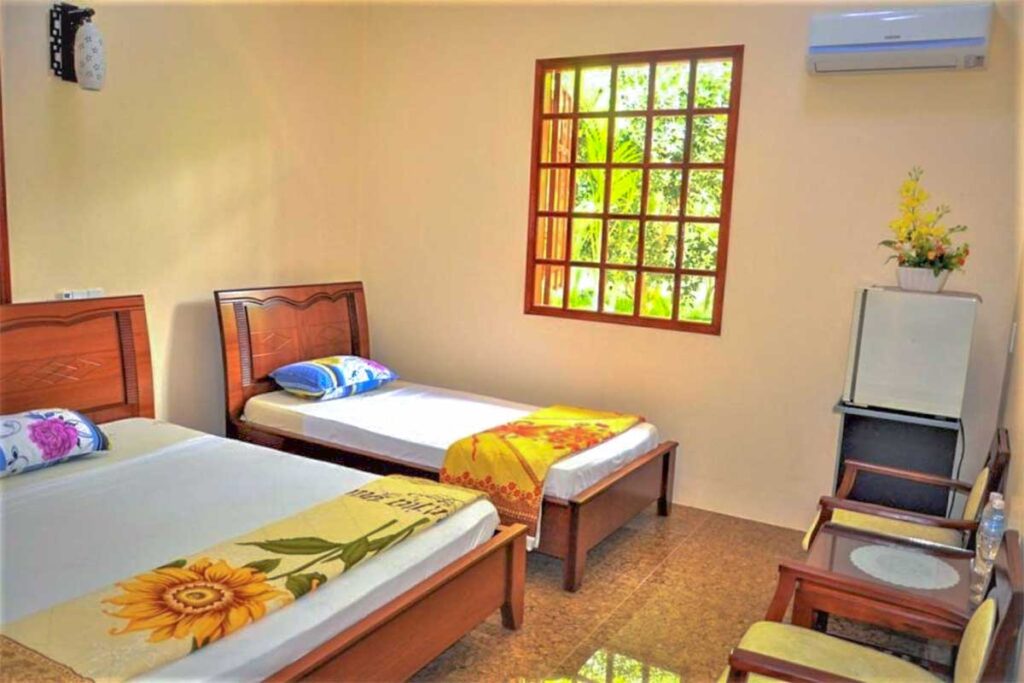
Pros and Cons
Pros: Staying here gives you a peaceful setting in a spacious fruit garden, and meals are generous and often home-cooked. The family is generally friendly, and it can be rewarding to spend more time with them compared to a short daytime visit.
Cons: Prices are higher than many comparable homestays in the Mekong Delta, and the rooms lack the charm many expect from such a historic property. The surrounding area has become somewhat industrial, so it’s not the most scenic place to wander outside the grounds.
Who it suits
A stay at Ba Duc is best suited for travelers who want the experience of being hosted by a family with deep local roots, in a setting that combines heritage with home-style hospitality. It is less suitable for visitors expecting boutique-level accommodation or those mainly interested in comfort and atmosphere rather than history.
Practical visiting information & Tips
Location & Address
Ba Duc Ancient House is in Dong Hoa Hiep Commune, Cai Be District, Tien Giang Province. The property sits beside the river and can be reached both by road and by boat.
How to get there
Cai Be is about two hours by car from Ho Chi Minh City and is usually visited as part of a wider Mekong Delta trip. From Cai Be town you can arrange a boat to the house, which remains the most atmospheric way to arrive.
Entrance Fee & Opening Hours
Entrance is generally around 30,000 VND. The house is open during daylight hours, while the evening is reserved for overnight guests.
Facilities
Facilities are limited to a small restaurant, shaded garden seating, and simple services like bicycle rentals. Everything is family-run, so don’t expect the kind of infrastructure you’d find at larger tourist sites.
Extra tips
- The riverside entrance is often the most reliable way in, as the larger roadside gate is not always open.
- Combine a visit here with other Cai Be highlights such as the floating market, fruit orchards, or other historic houses in Dong Hoa Hiep village.
- If you want to try a meal at the house, it’s best to arrange this in advance.
Is Ba Duc Ancient House worth visiting?
Ba Duc Ancient House is an attractive stop, but it’s not the kind of place that should be the sole purpose of a trip. The house has charm, with its mix of French and Vietnamese architecture and peaceful garden, but the interiors are fairly limited compared to grander heritage sites elsewhere.
Where it becomes more enjoyable is through the experience: arriving by boat, having a meal in the garden, or talking with the family adds context and warmth that a quick walk-through doesn’t provide. For many visitors, these extras are what make the stop memorable.
Pros: distinctive architecture, quiet gardens, personal family stories, enjoyable meals.
Cons: small scale, limited displays, entrance fees not always clear, and homestay prices higher than alternatives.
In short: Ba Duc is worth visiting if you’re already exploring Cai Be or doing a boat trip in the area, but it’s unlikely to feel special as a standalone destination.
